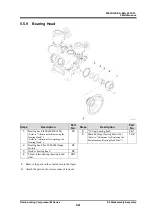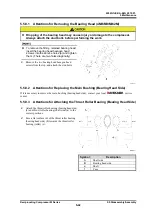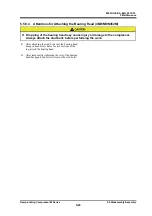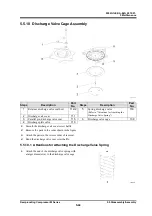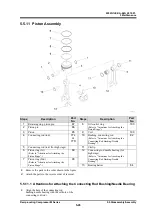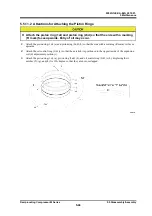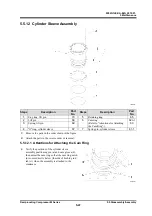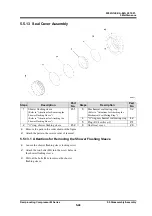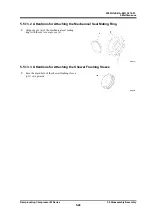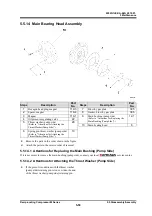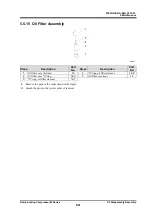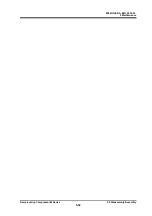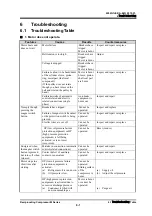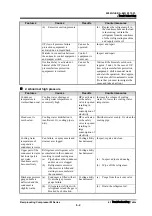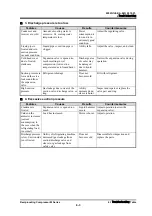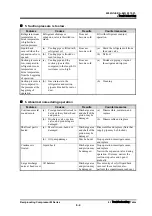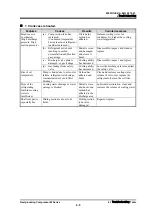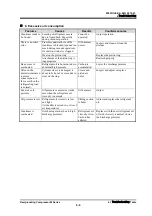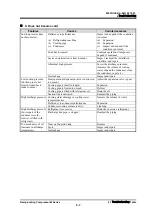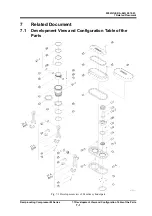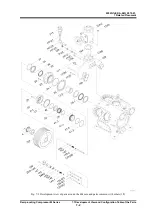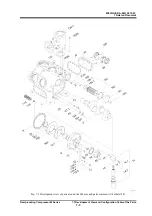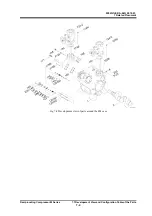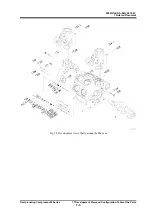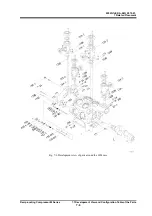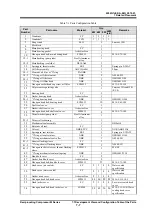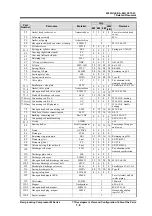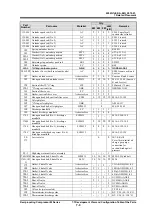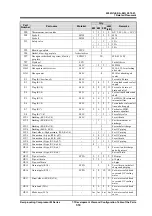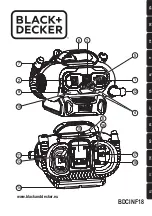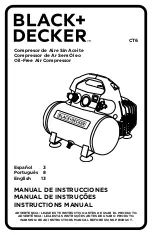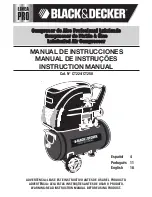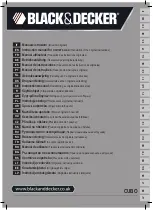
2202G1JE-DA-M-N_2010.01.
6
Troubleshooting
Reciprocating Compressor M Series
6.1
Troubleshooting
Table
6-3
3. Discharge pressure is too low.
Features
Causes
Results
Countermeasures
Condenser and
receiver are cold.
Amount of cooling water is
excessive. Or, cooling water
temperature is low.
Power
consumption is
low and is in
extremely good
condition.
Adjust the regulating valve.
Liquid pipe is
frosted and is in
suction pressure
vacuum condition.
Liquid pipe or suction pipe is
clogged.
Ability falls.
Adjust the valve, inspect, and clean.
Cold head cover
due to frosted
crankcase
Expansion valve is opened too
much resulting in wet
compression (low suction
temperature due to liquid back).
Discharge area
of cooler may
be damaged
due to liquid
hammer.
Narrow the expansion valve during
operation.
Suction pressure is
low and there is a
leak sound from
the expansion
valve.
Refrigerant shortage
Does not
become cold
Fill with refrigerant.
High suction
pressure
Gas leakage due to wear of the
suction valve, discharge valve, or
ring
Ability
decreased and
sleeve is burnt.
Inspect and repair or replace the
valve part and ring.
4. Excessive suction pressure
Features
Causes
Results
Countermeasures
Crankcase is
frosted.
Expansion valve is opened too
much.
Liquid hammer
occurs.
Adjust operation (narrow the
expansion valve).
Value on the
ammeter increased
(current
consumption; in
the case when the
refrigerating load
is normal).
Load has increased.
Motor is burnt. Adjust operation.
Discharge pressure
is low. Suction side
is not frosted.
Ability of refrigerating machine
decreased (gas leakage from
suction/discharge valve and
sleeve) or gas leakage from
safety valve
Does not
become cold
Disassemble for inspection and
replace the parts.

